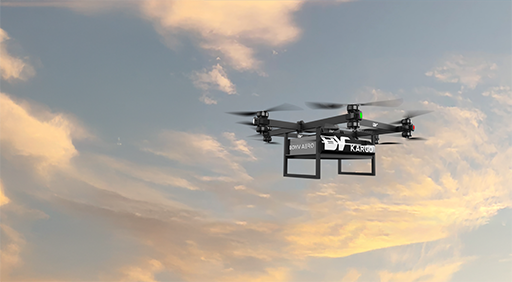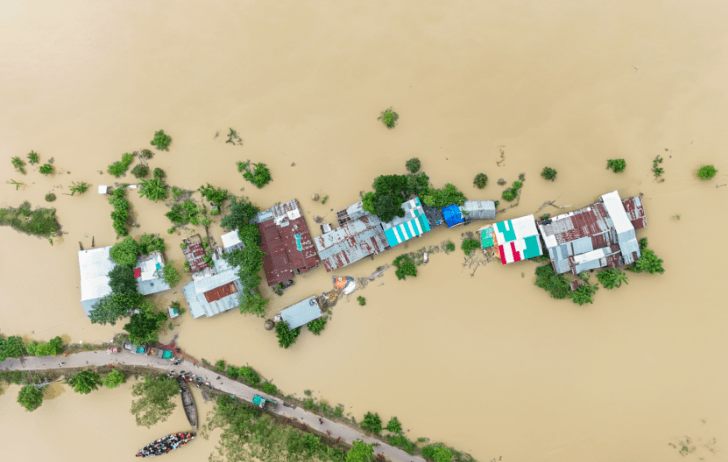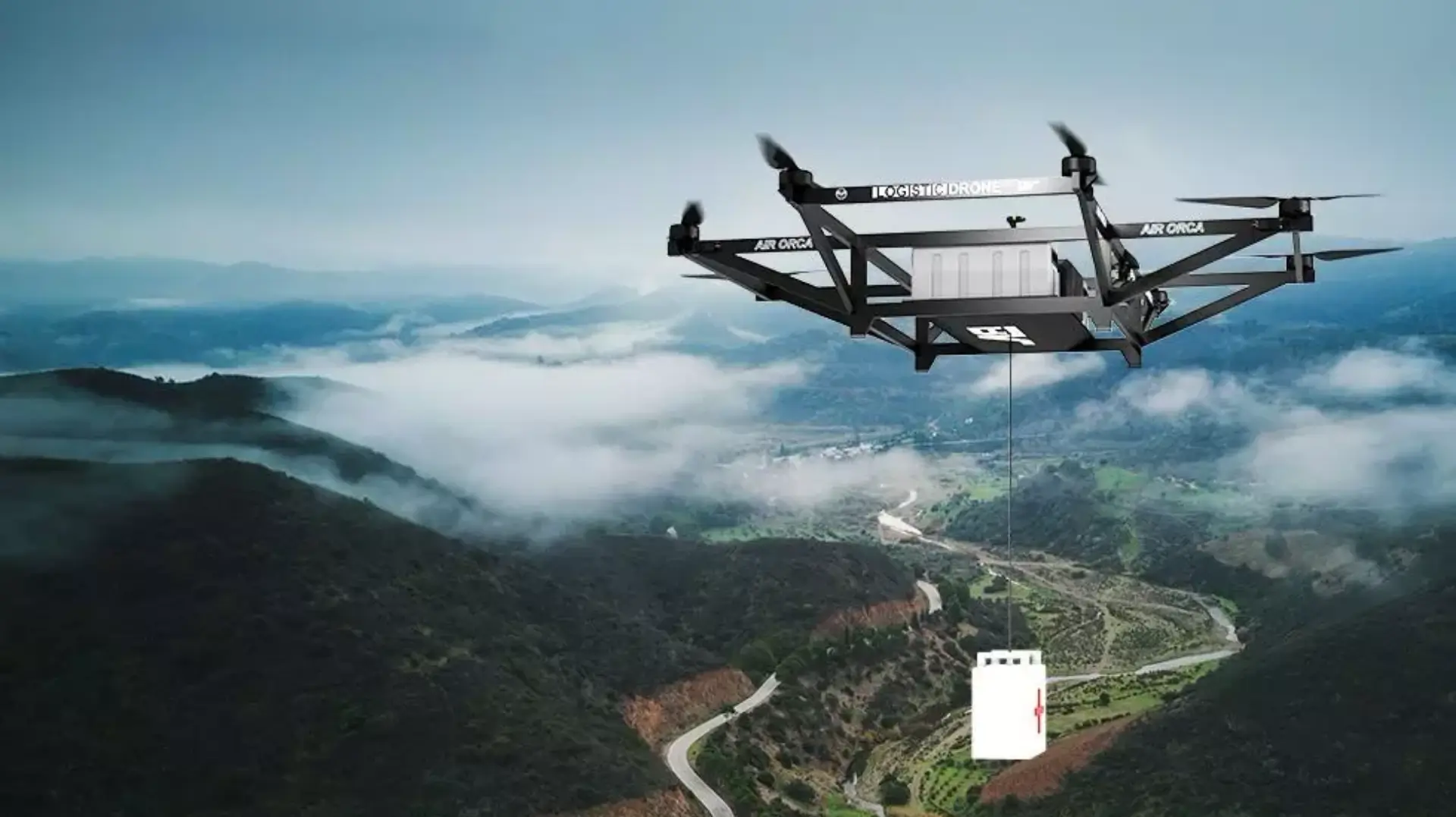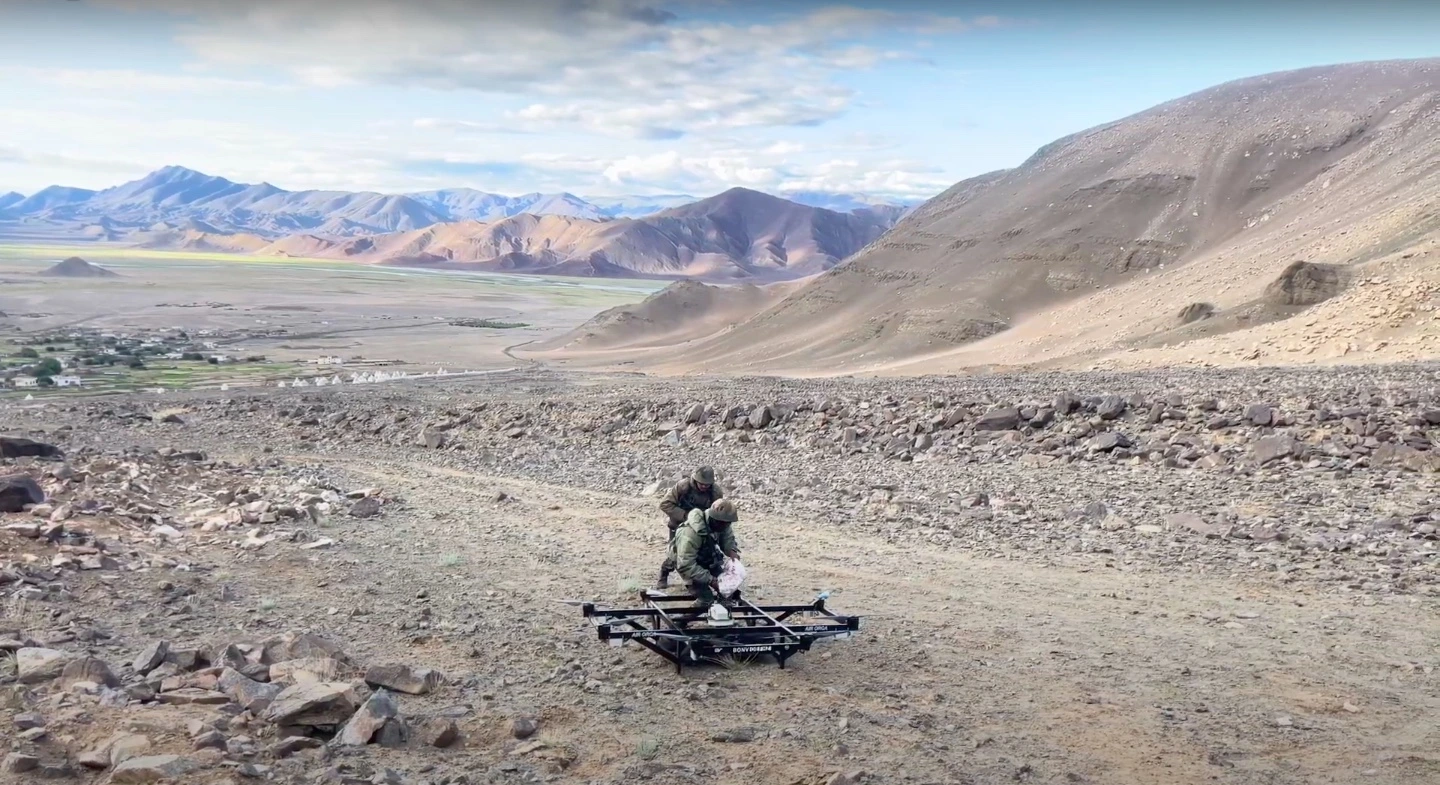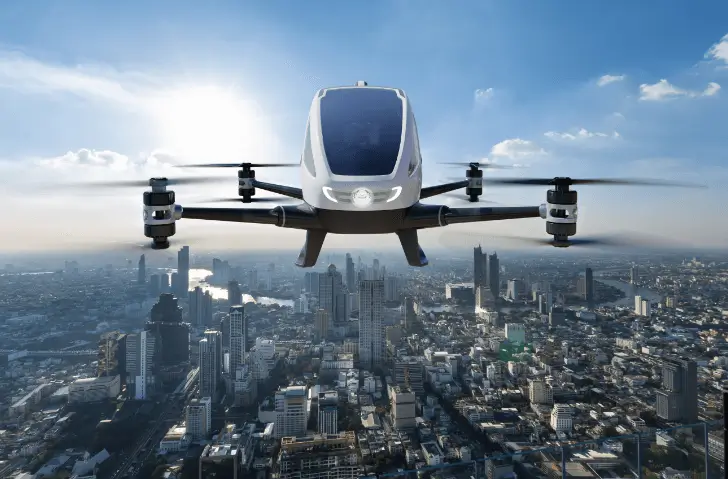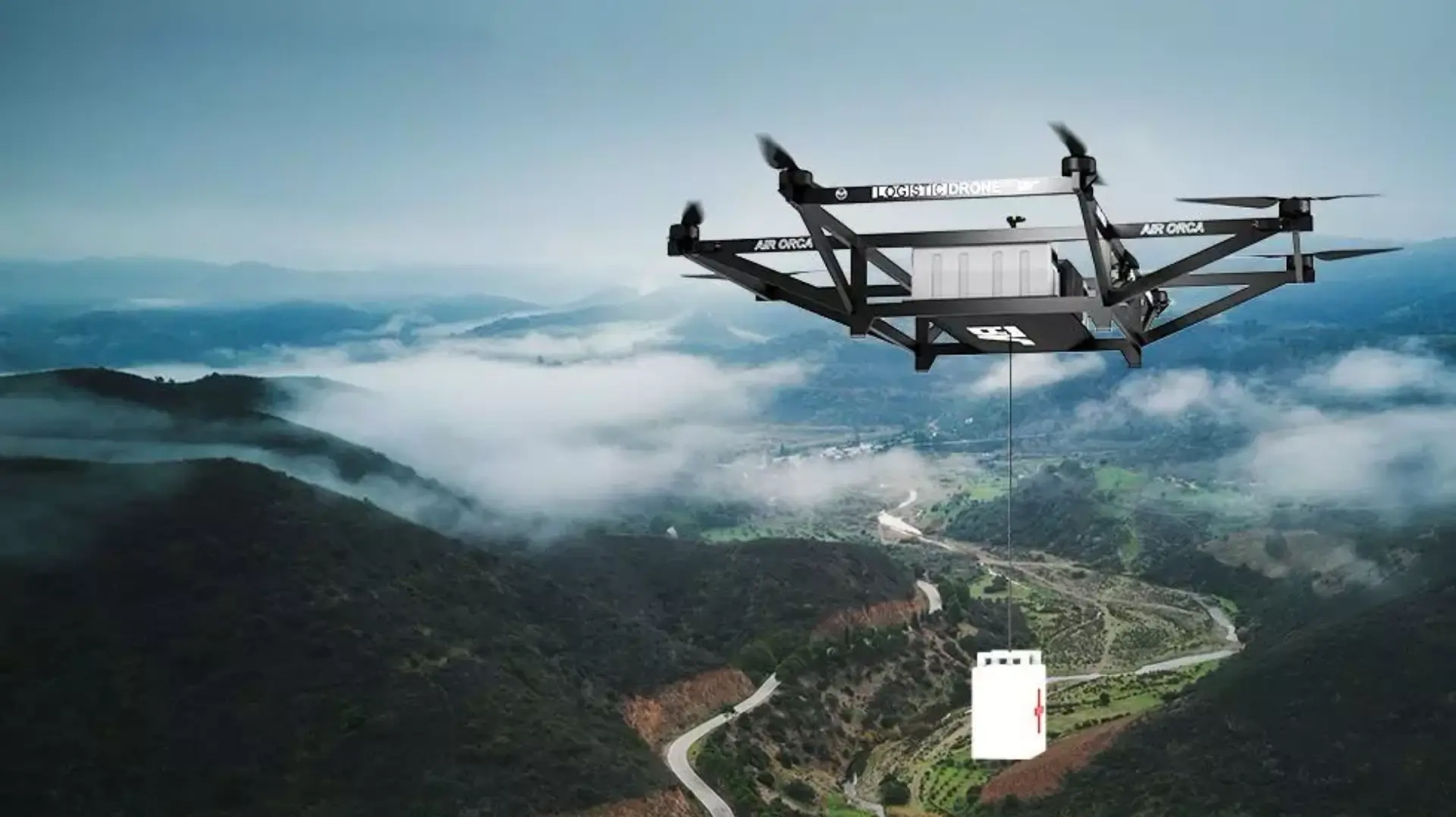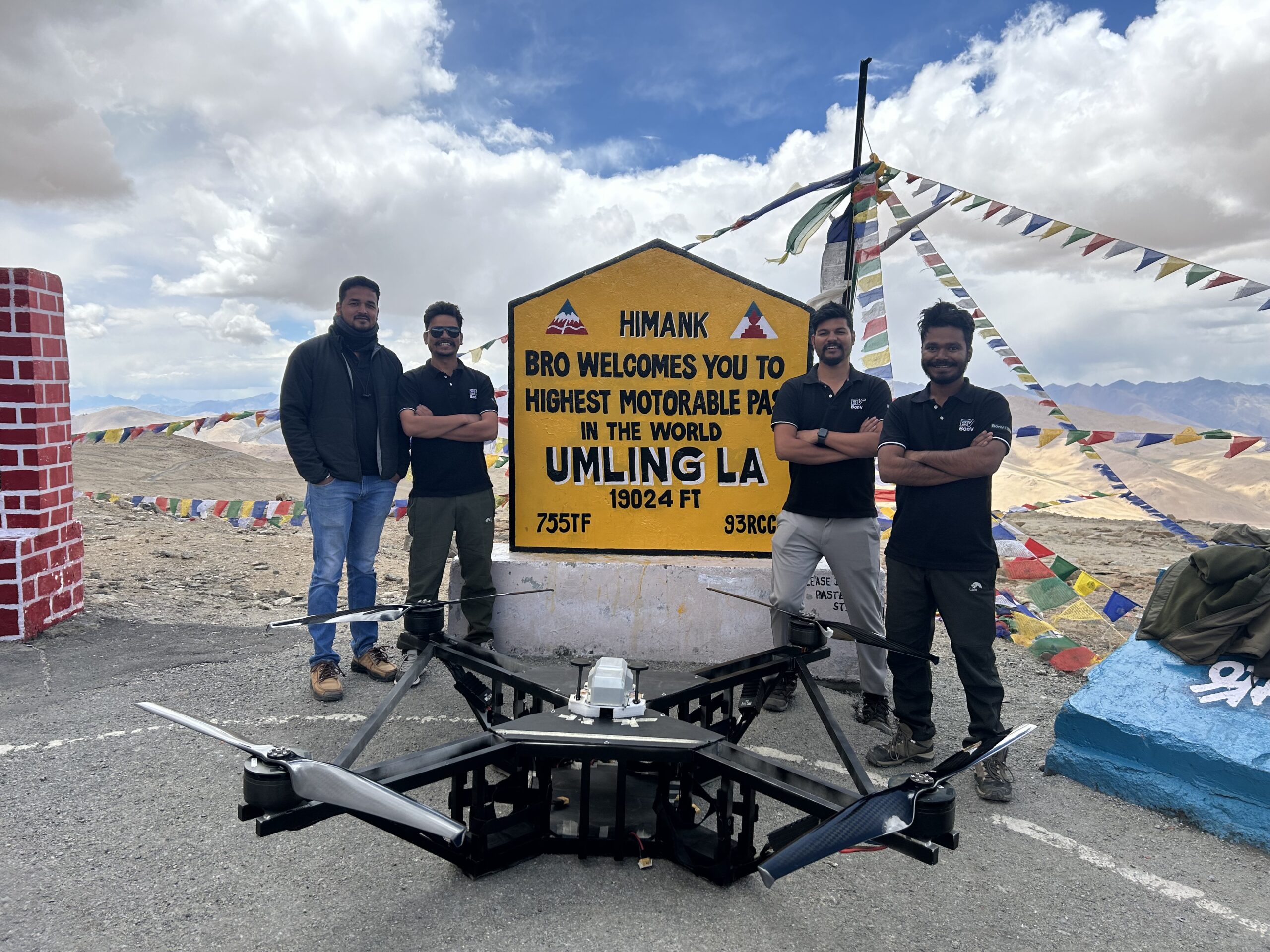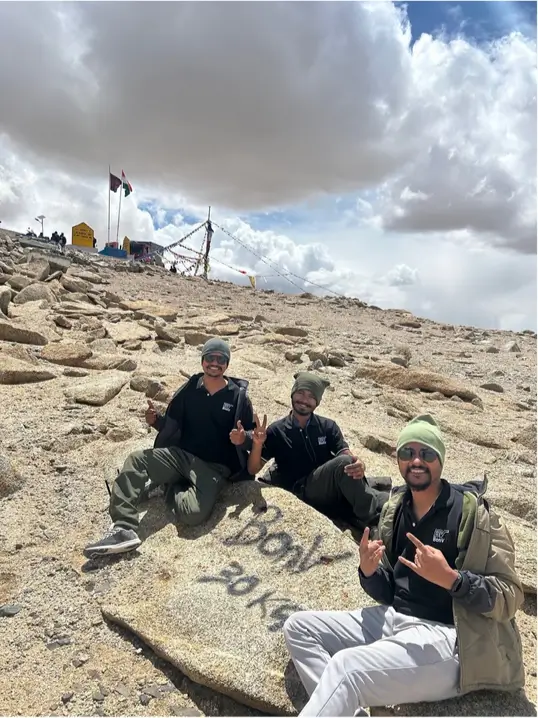If you’ve ever worked with farmers or even spoken to one during sowing or harvest, you know that logistics in agriculture is a constant hustle. Farmers require timely access to seeds, fertilisers, tools, and spare parts. And once the crops are harvested, they must be transported promptly to prevent spoilage.
But here’s the problem: remote farms, broken roads, high transport costs, and delays aren’t just annoyances. They mess with farmers’ income and crop cycles. If drones dropped supplies or picked up crops instead of waiting days for them to arrive, there would be no roads, no traffic, and no middlemen to delay the process.
According to Fortune Business Insights Global agriculture drone market was USD 4.98 billion in 2023, projected to reach USD 23.78 billion by 2032 (CAGR ~18.5%).
That’s the shift we’re seeing today. Use of drones in agriculture aren’t just for spraying crops anymore, they’re becoming a practical solution for moving goods efficiently. Whether it’s getting supplies to a small farm or collecting fresh produce in time, using logistics drone technology in agriculture is making farming faster, more affordable, and far more reliable.
What Are Agriculture Drones?
When most people hear agriculture drones, they think of spraying pesticides or flying cameras. But logistics drones are a different breed. There primary function is to transport inputs or produce from Point A to Point B.
Seeds, fertilisers, fresh vegetables, milk, small tools, even emergency kits. They’re like flying delivery trucks, but way faster, and they don’t need a road to do the job.
A Quick Look at What They Can Do:
- It can carry up to 20–25 kg, depending on the model.
- Fly 10 to 50 km per trip
- Navigate with GPS and smart flight systems
- Run on batteries or fuel cells
What Kind of Drone Is Mainly Utilize in Agriculture?
In modern farming, multirotor drones, especially quadcopters and hexacopters are the most common. They can hover steadily, fly at low altitudes, and carry payloads for spraying, seeding, and crop health monitoring. For large fields, fixed-wing drones are preferred for their longer flight times and wide coverage, while hybrid drones offer both precision and range, making them ideal for mixed farming needs.
What Are the Use Case of Agricultural Drone?
Let’s see how a drone for agriculture purpose can help improve farming logistics.
1. Getting Inputs to Farmers Fast
During sowing season, delays in getting seeds or fertilisers can mess up the whole schedule. With drones, farmers can get:
- Seeds
- Organic or chemical fertilisers
- Pesticide bottles
- Delivered directly to their farms, even if they’re 30 km from the nearest town.
2. Picking Up Fresh Produce
Fruits and veggies don’t have a long shelf life. Delays in transporting them lead to financial losses.
Drones are now picking up:
- Tomatoes, spinach, mangoes
- Grains from smallholder farms
- Milk from remote dairy areas
Taking them straight to cold storage or local collection hubs sometimes cuts spoilage by 30 to 40%.
3. Supplying Tools and Spare Parts
Ever had a pipe burst or pump fail right in the middle of irrigation season? With drones, small parts like nozzles, belts, or fittings can be delivered same-day, no need for the farmer to shut things down and travel 2 hours to town.
4. Emergency Deliveries Through Drone
In emergencies, reaching farmers quickly can be tough but drones make it possible. They fly over damaged areas, helping speed up support and reduce losses when time matters most.
For example, In disaster-hit areas, when roads are damaged or washed away, drones step in as a vital lifeline. They can quickly deliver emergency supplies like seeds, fertilizer boosters, and animal feed to farmers who are cut off and need urgent help.
Whether it’s a flood, drought, or a sudden pest outbreak, drones make sure support reaches places that trucks and tractors simply can’t. They also help survey flooded fields, assess crop damage, and guide recovery all without setting foot in the mud.
We’ve seen this first-hand while supporting drone disaster response efforts in Sikkim. Even though it wasn’t a farming mission, it proved just how reliable and useful drones can be when it matters most.
Whether it’s a flood, cyclone, or landslide, drones help support rapid disaster response ensuring farmers recover faster and avoid major crop or livestock losses.
5.Transporting Soil Testing Kits or Samples
Instead of farmers carrying soil samples to distant labs (or waiting weeks for collection), drones can:
- Drop off sample collection kits to farms
- Pick up soil or water samples for lab testing
- Speed up the recommendation process for fertilisers or crop planning
This supports precision agriculture and helps improve soil health decisions in real time.
6. Milk Collection in Hilly Areas
In some parts of India and Africa, drones are being tested to collect milk from high-altitude dairy farms and deliver it straight to village chilling centres. It’s faster, cleaner, and saves time.
What Are the Benefits of Using Drones in Agriculture
The benefit of using agriculture drones is not just about embracing new technology. It’s about solving long-standing challenges in rural supply chains. From reducing delays to improving delivery precision, drones bring measurable improvements to farm operations.
Key Benefits:
- Saves time by reducing the wait for inputs, spare parts, and tools deliveries that once took days now take hours.
- Reduces crop spoilage by ensuring faster transport of fresh produce to storage or markets.
- Lowers overall logistics costs by cutting down fuel expenses, manual transport, and repeated trips.
- Enhances supply chain control with real-time tracking and automated delivery management, giving cooperatives and agribusinesses more visibility across last-mile operations.
- For fragmented or remote farming zones, drones offer a reliable and scalable solution supporting both day-to-day needs and seasonal demands.
How Does an Agriculture Drone Work?
The best drones for agricultural logistics are built to be efficient, dependable, and easy to deploy in rural environments. They combine hardware strength with smart software, making them ideal for high-frequency, short-haul deliveries.
Key Technologies of agriculture drone
- GPS navigation systems for automated, precise route planning.
- Obstacle-aware flight algorithms to adapt to terrain and avoid weather-related delays.
- Payload protection systems to ensure secure and stable delivery, even over uneven routes.
- Battery or hybrid power options to support different range and load requirements.
- Live tracking interfaces that allow operators to monitor flights and confirm delivery in real-time.
These features make drones highly suitable for modernising the agriculture supply chain, especially in areas underserved by traditional logistics networks.
Which Countries Are Adopting Agriculture Drones?
Globally, agricultural drones are becoming more prevalent. For crop spraying and field checks, they are already used in large-scale farming in the United States and Canada. Several European countries, including France, Germany, Italy, and the UK, are using drones to make farming more efficient and eco-friendly.
Countries like China, India, and Japan are adopting them quickly, often with government support. Drone mapping and spraying are being done by Brazil, Mexico, and Argentina in Latin America. Drones are being explored in places such as UAE, Saudi Arabia, Kenya, and South Africa to improve irrigation, pest control, and harvest management.
In India, for instance, Farmer Producer Organisations (FPOs) are increasingly using drone fleets to coordinate deliveries at scale, reducing delays and optimising resource use during peak seasons.
These early successes demonstrate how logistics drones in farming are bridging critical gaps in both input supply and produce collection.
What Are the Problems With Drones in Agriculture?
While the technology is promising, certain limitations need to be addressed for wider adoption:
- Payload capacity constraints limit large or bulk-item transport; current systems are ideal for small to medium loads.
- Weather sensitivity remains a factor; drones may face operational downtime during high winds or heavy rain.
- Knowledge and training gaps still exist, especially in rural areas where drone literacy is still developing.
- Regulatory uncertainty in some regions slows down commercial scaling, with airspace laws still evolving.
Despite these hurdles, continuous R&D, policy updates, and growing rural connectivity are helping to gradually overcome these barriers.
What’s Next for Drone Logistics in Farming
The future of drones in the agriculture supply chain looks increasingly promising, especially with innovations on the horizon.
Expected Trends:
- Higher payload capacity enabling larger and more diverse deliveries
- Drone corridors and dedicated air routes supported by government initiatives
- Mobile-based ordering and logistics apps tailored for farming communities
- Integration with smart farming systems (IoT, sensors, crop monitoring platforms)
As these advancements take shape, drones will move from being a niche solution to a standard part of agricultural operations just like tractors or irrigation systems.
Indian Government Agriculture Drone Schemes
Agricultural drones in India are helping farmers work faster and smarter. To promote drones for agriculture use in India, the government has launched several schemes to make them more affordable and accessible.
1. Sub-Mission on Agricultural Mechanisation (SMAM): This scheme offers financial assistance to make drones more affordable for farmers and FPOs. Custom Hiring Centres (CHCs) and State Agri Universities can receive up to 100% subsidy (or ₹10 lakhs) for drone procurement, helping promote shared drone access across villages.
2. Namo Drone Didi Scheme: Namo drone didi scheme empowers women in Self-Help Groups (SHGs) to become drone pilots and service providers. It includes drone training, soft loans, and income generation support, encouraging rural women-led entrepreneurship in modern agri-tech.
3. Pradhan Mantri Fasal Bima Yojana (PMFBY): Under PMFBY, drones are now used for faster and more accurate crop loss assessment, especially after floods, droughts, or storms. This helps speed up insurance claims and ensures farmers get compensated in time.
4. Drone Rules 2021 (Liberalized Regulations): The Government of India simplified drone rules in 2021, reducing red tape and making it easier to get approvals for drone operations. Drones can now be used for logistics, crop monitoring, and delivery by startups, FPOs, and cooperatives.
Ready to Modernise Your Farm Supply Chain?
Drones are quietly transforming rural logistics making it easier, faster, and more reliable to move farm inputs, tools, and fresh produce across tough terrains. From urgent fertilizer deliveries to same-day pickup of perishable goods, they’re helping farmers reduce spoilage, save time, and stay productive.
As logistics drone manufacturers in India, we design UAVs built for real-world challenges whether it’s reaching flood-affected zones or delivering essentials to remote farm clusters. The future of farming logistics isn’t just about roads anymore.
It’s already taking flight and transforming how farming logistics operate.

Abinash Sahoo is Co-Founder of BonV Aero and a seasoned aerospace engineer. His hands-on eVTOL experience and love for exploring remote India inspire his mission to improve aerial mobility in hard-to-reach regions.


